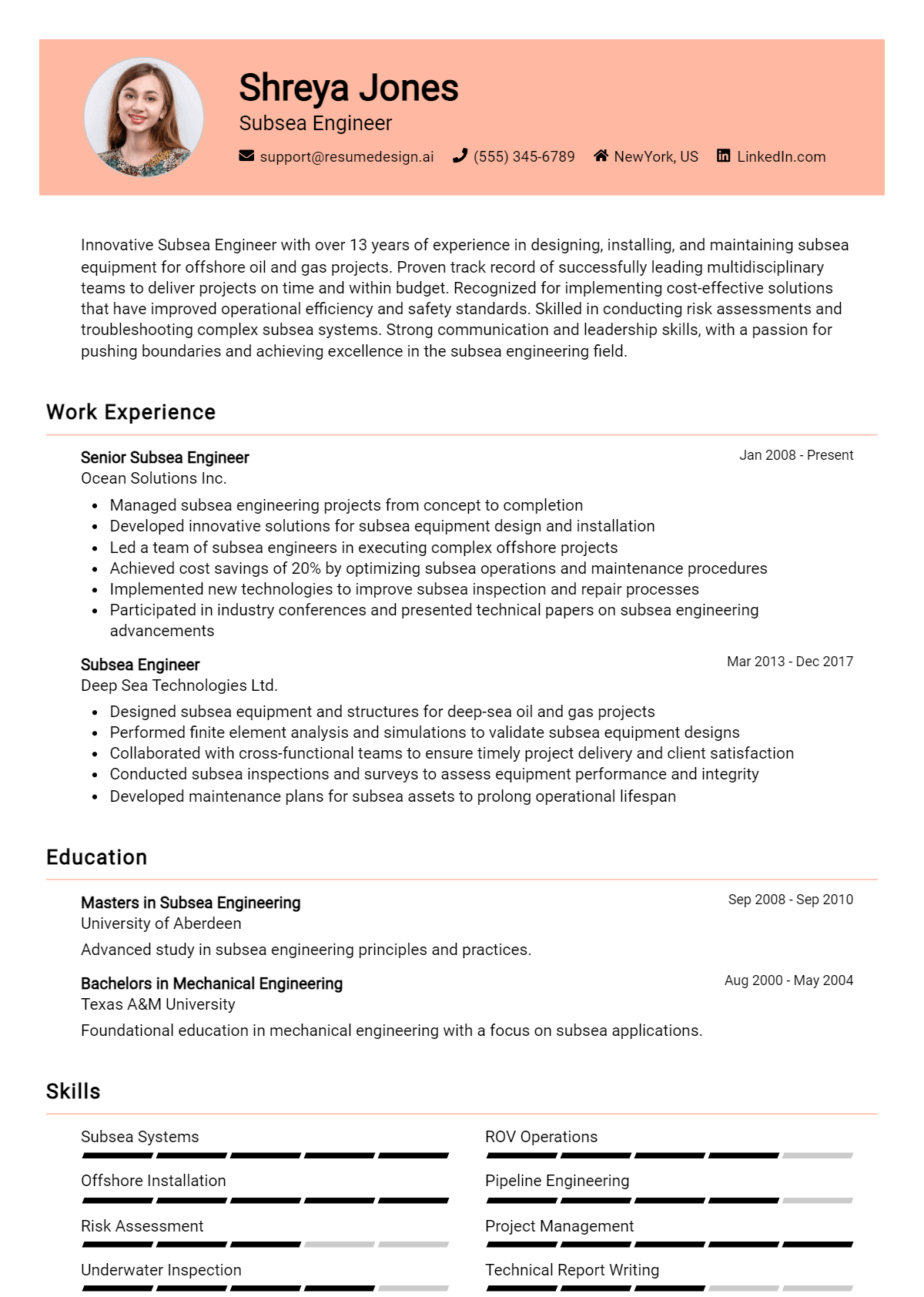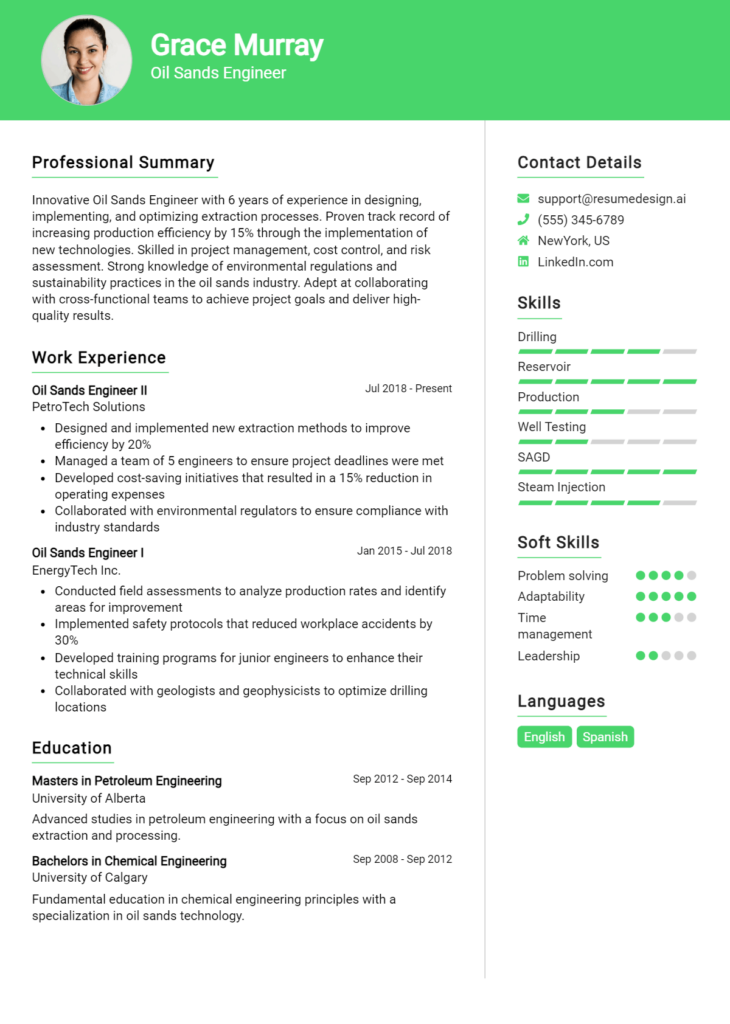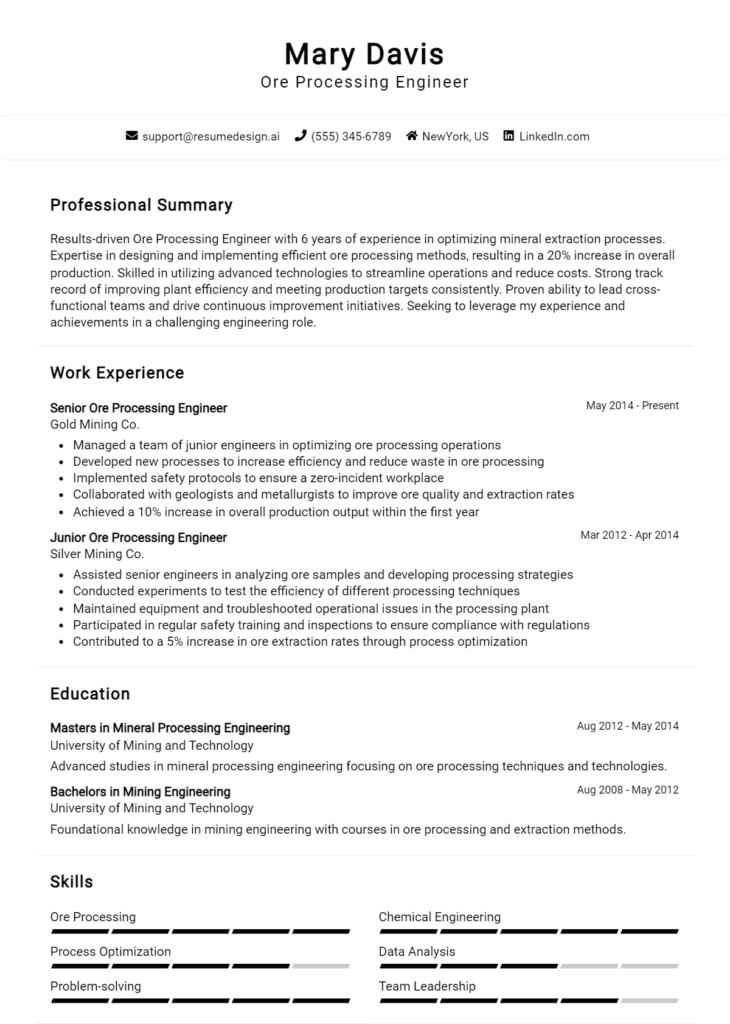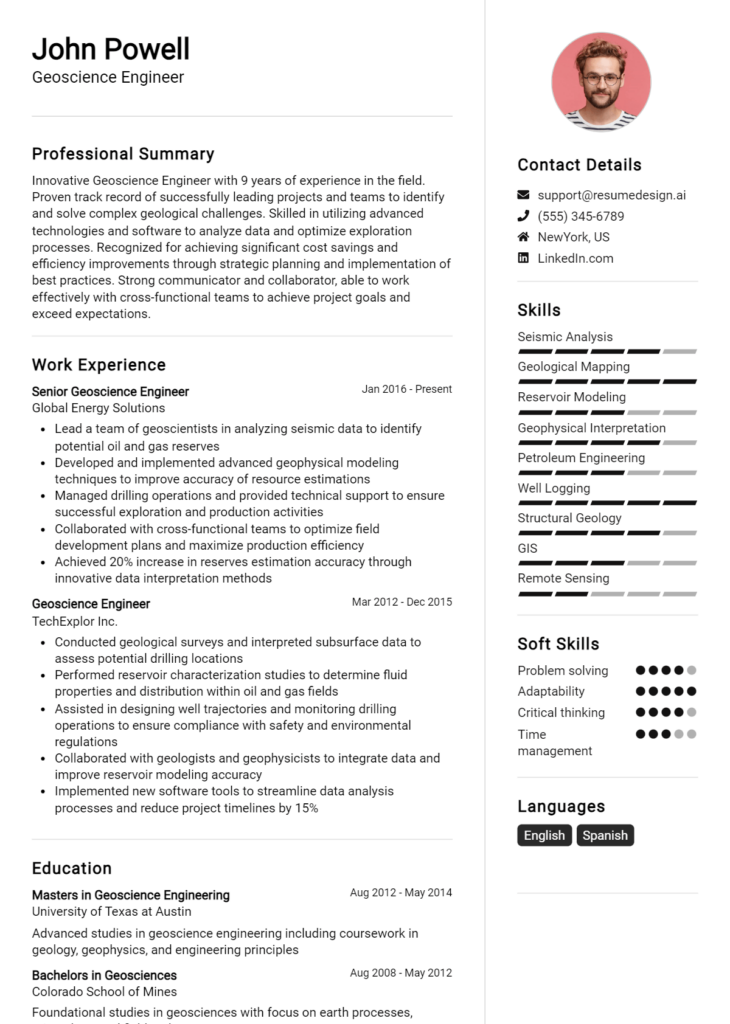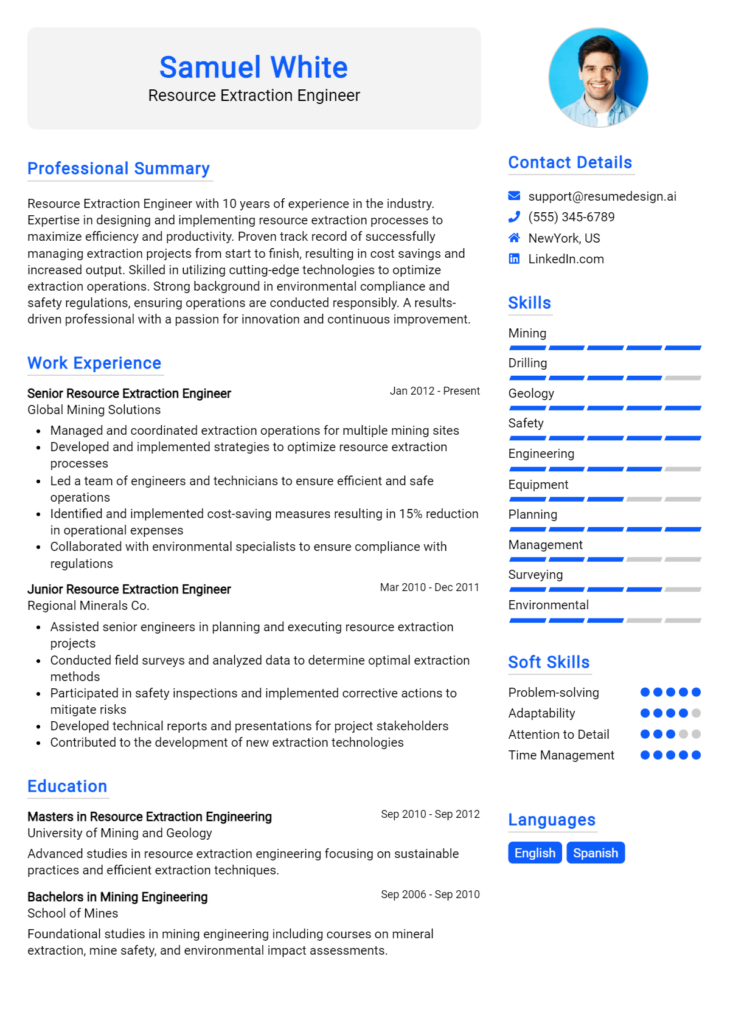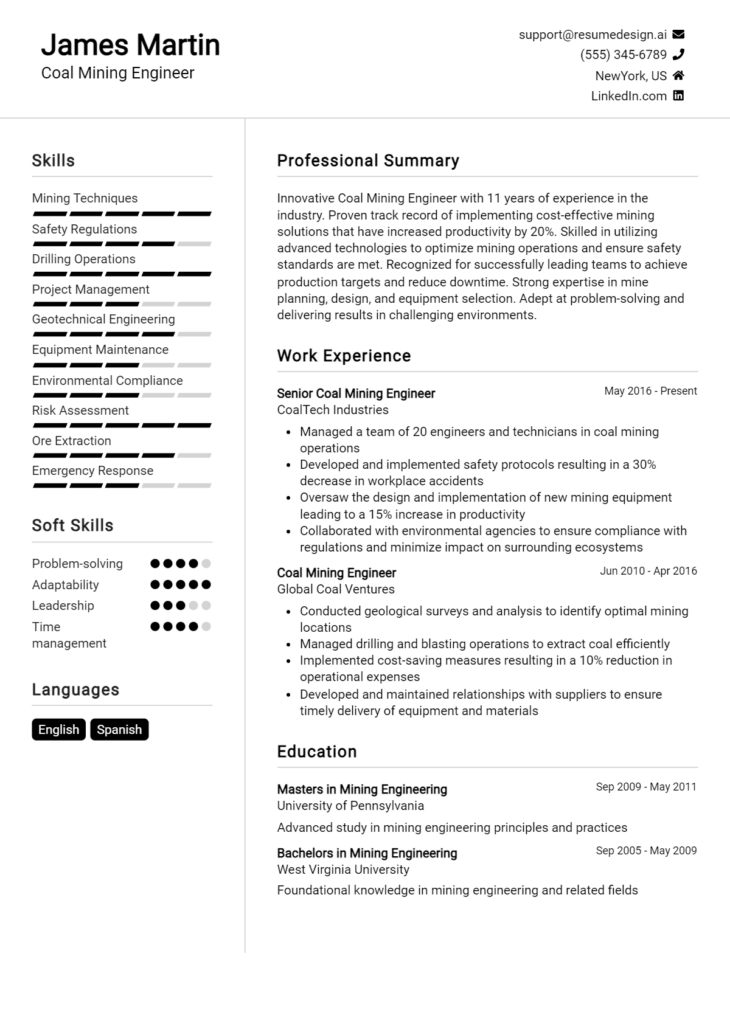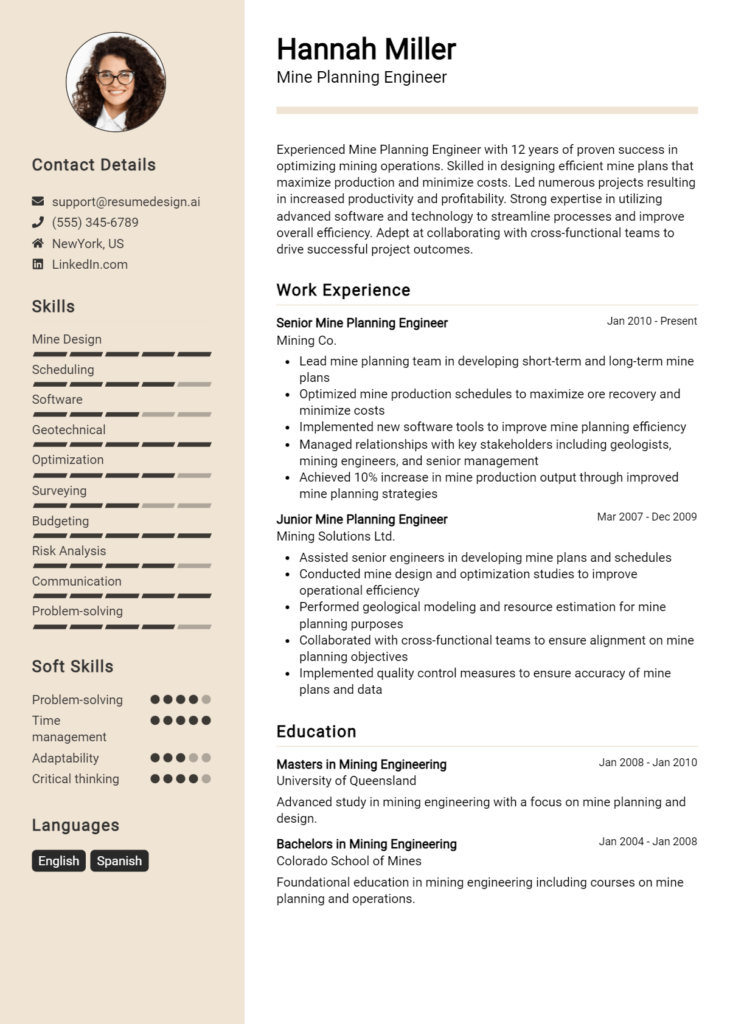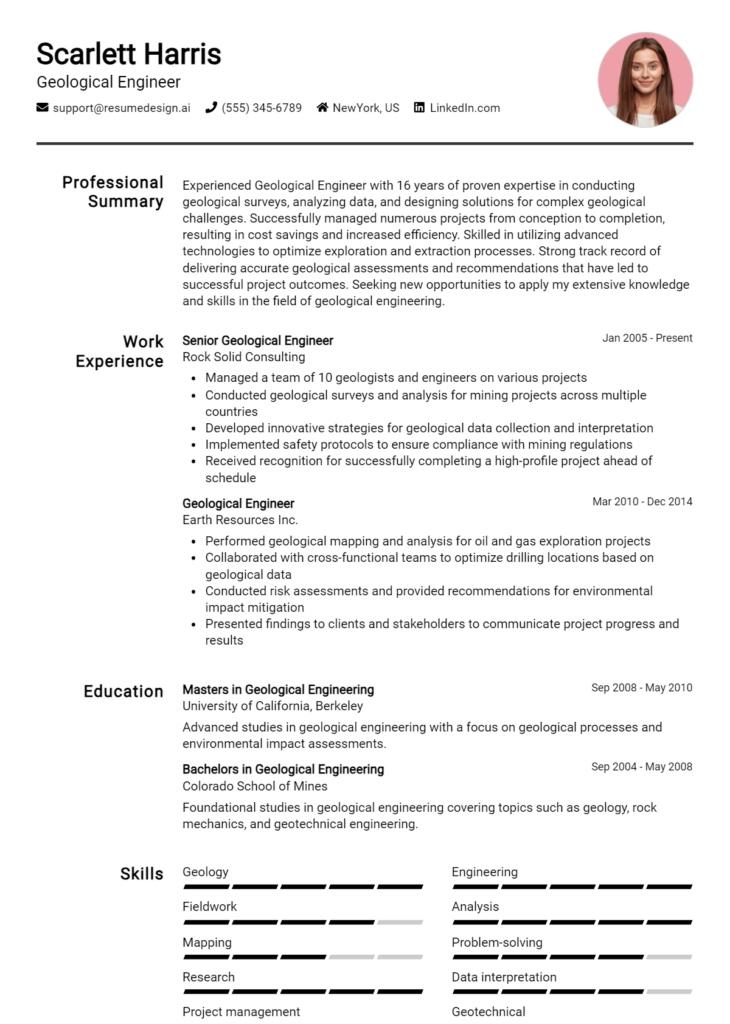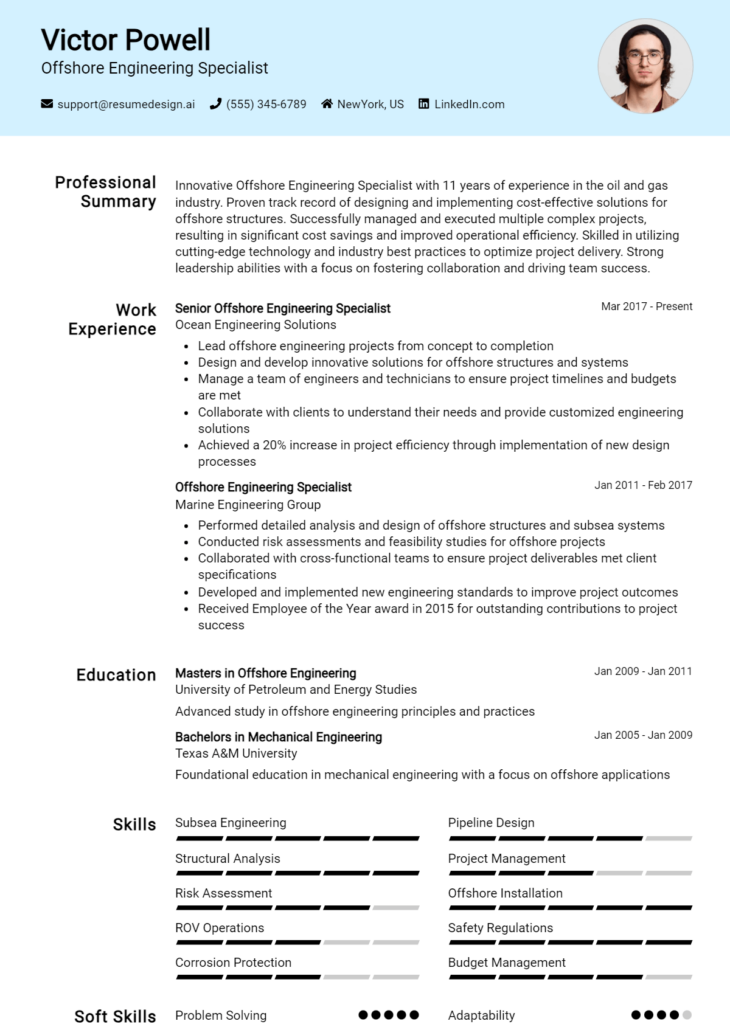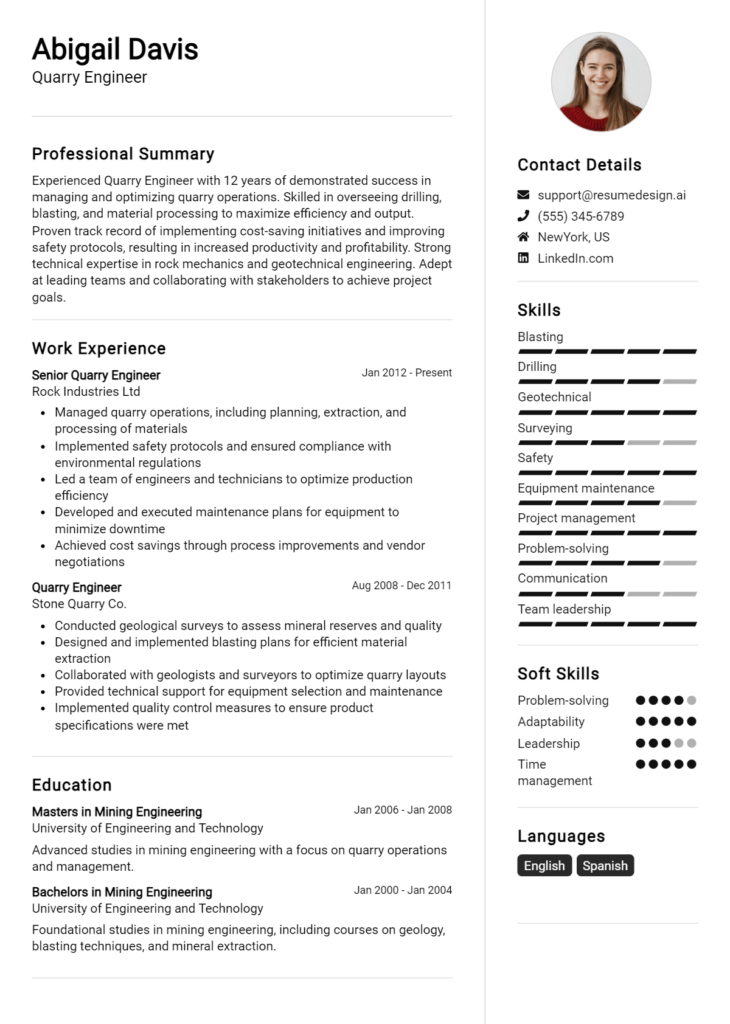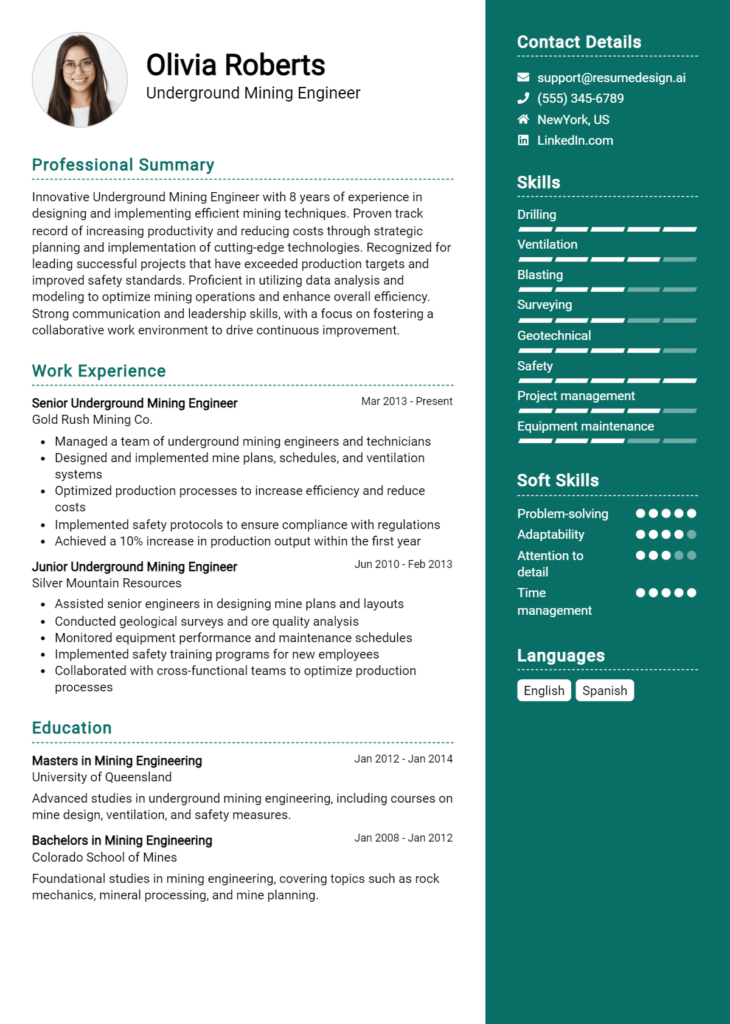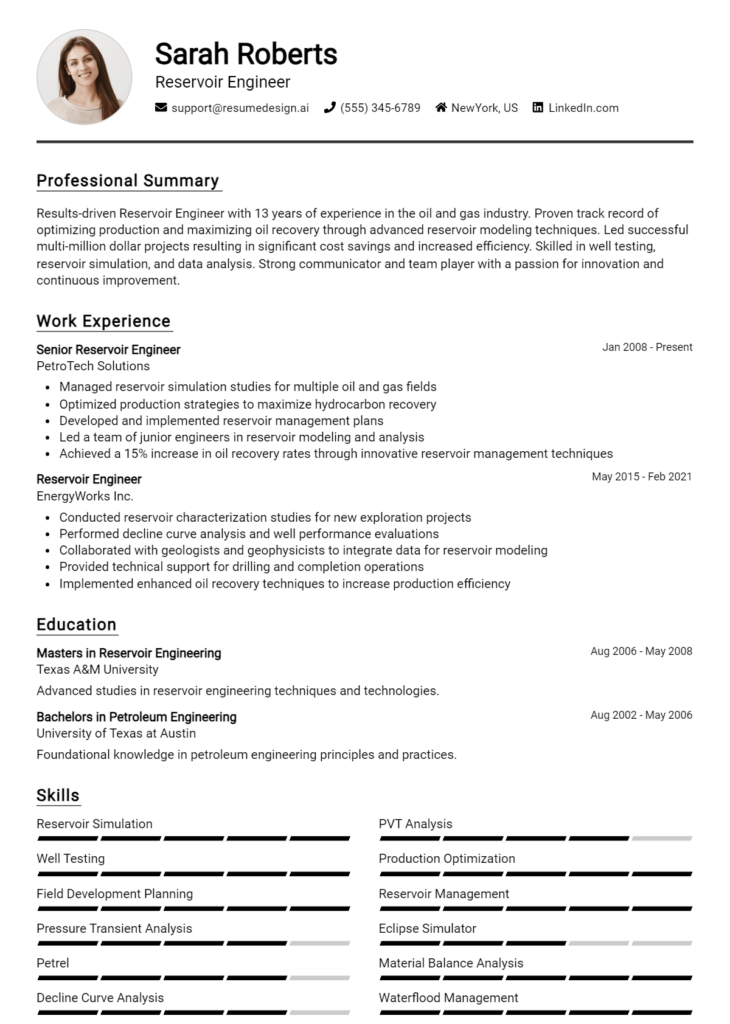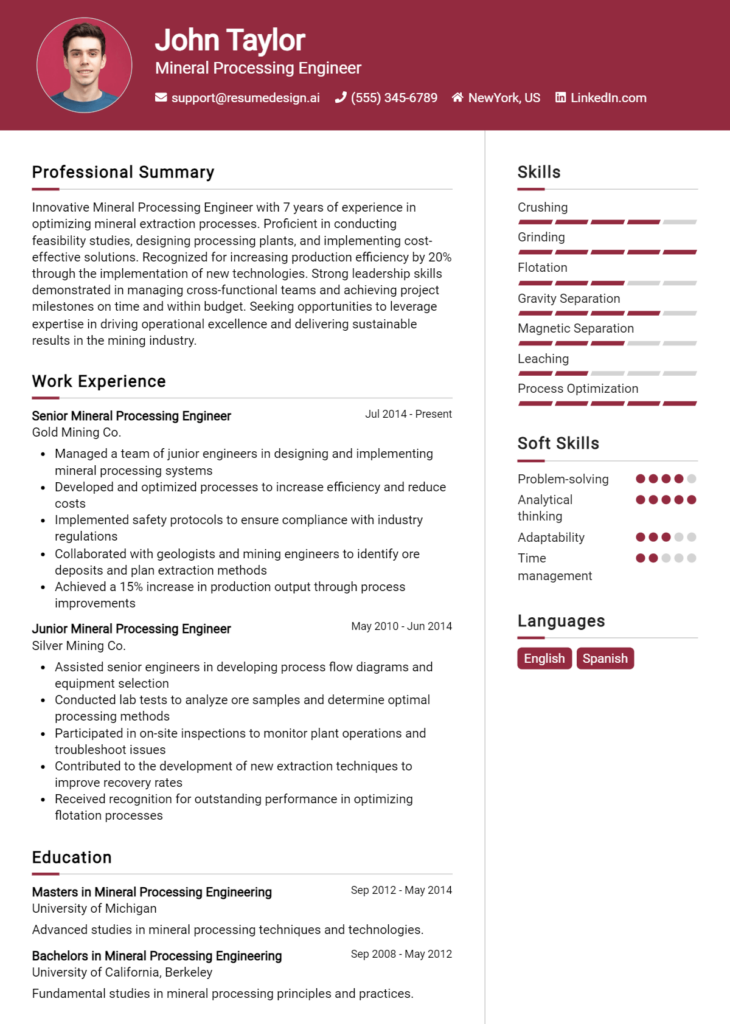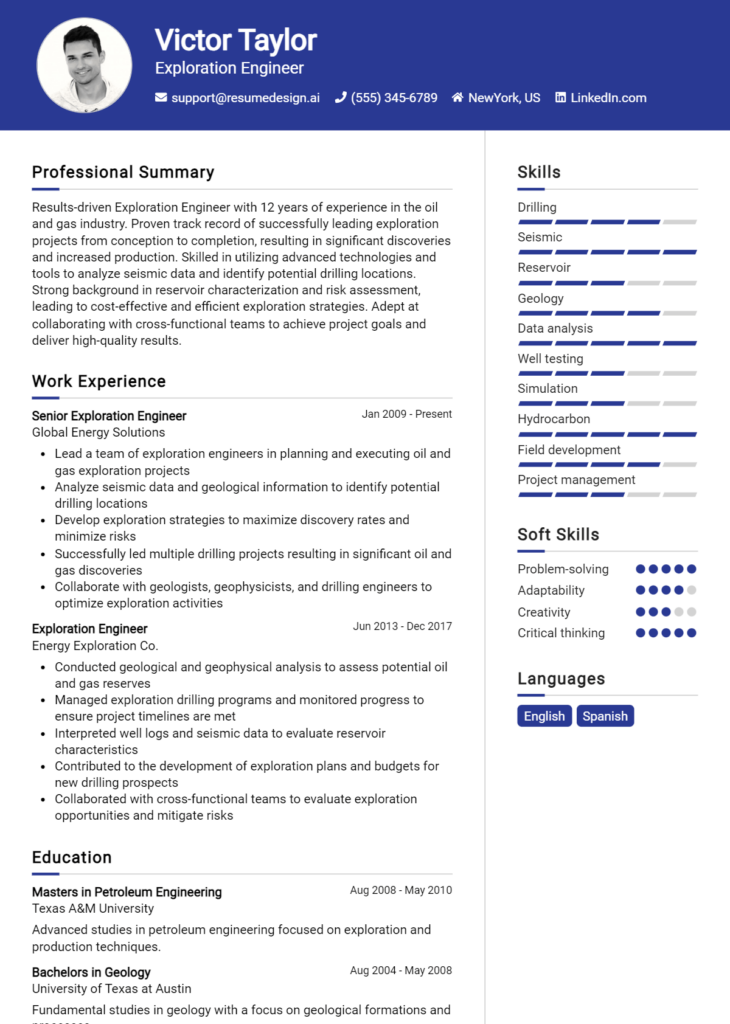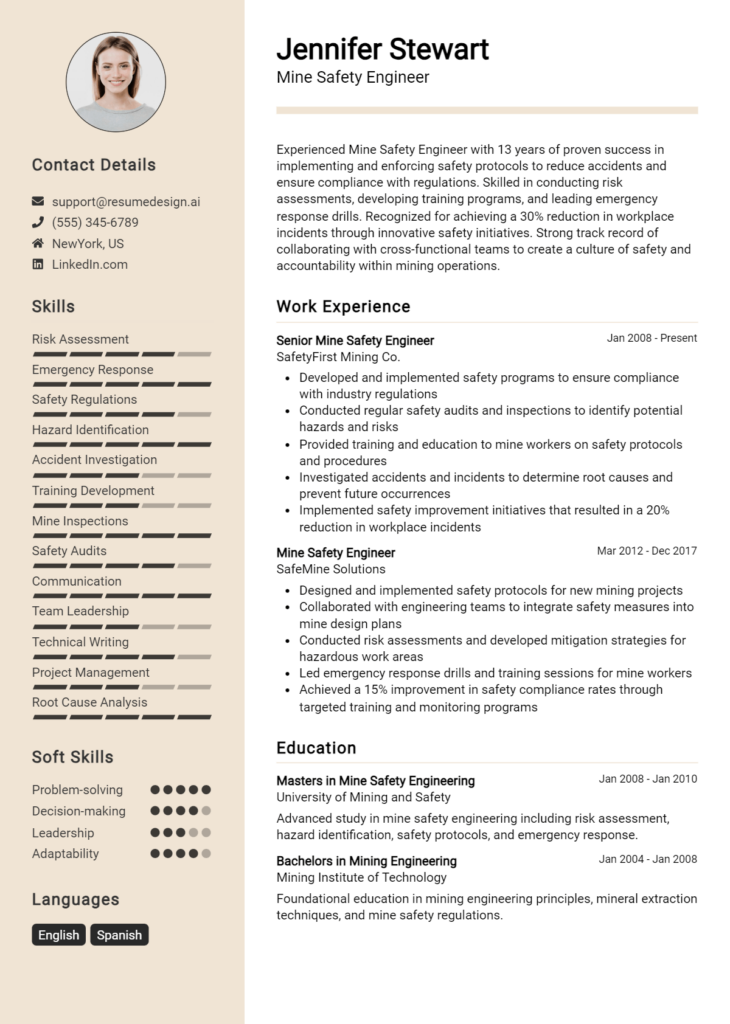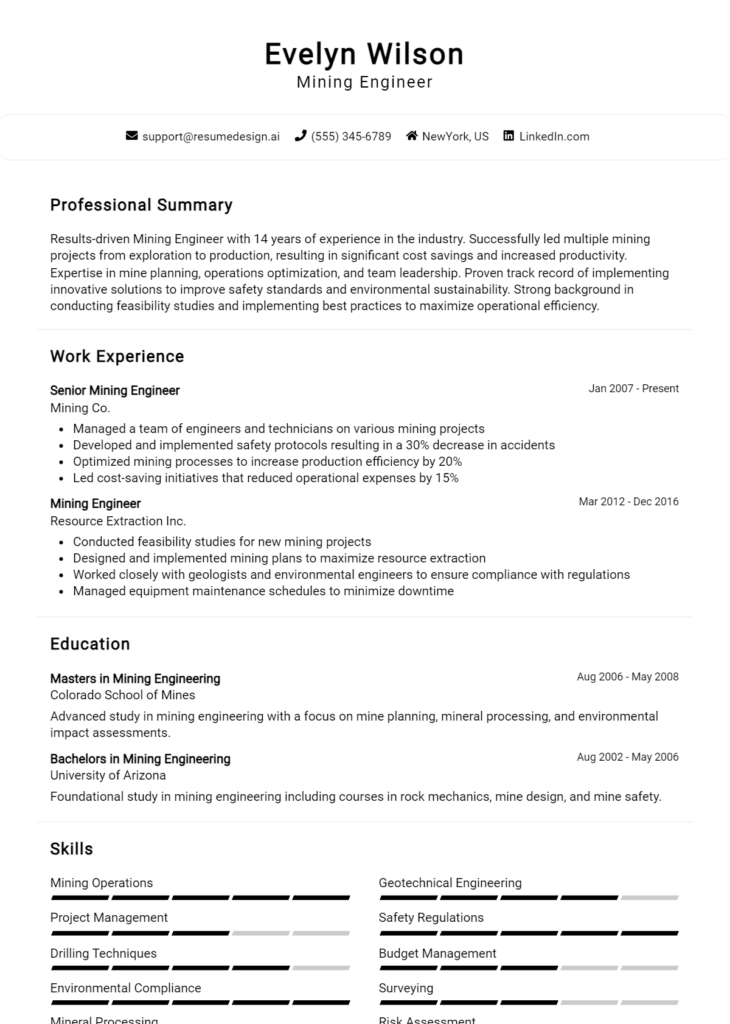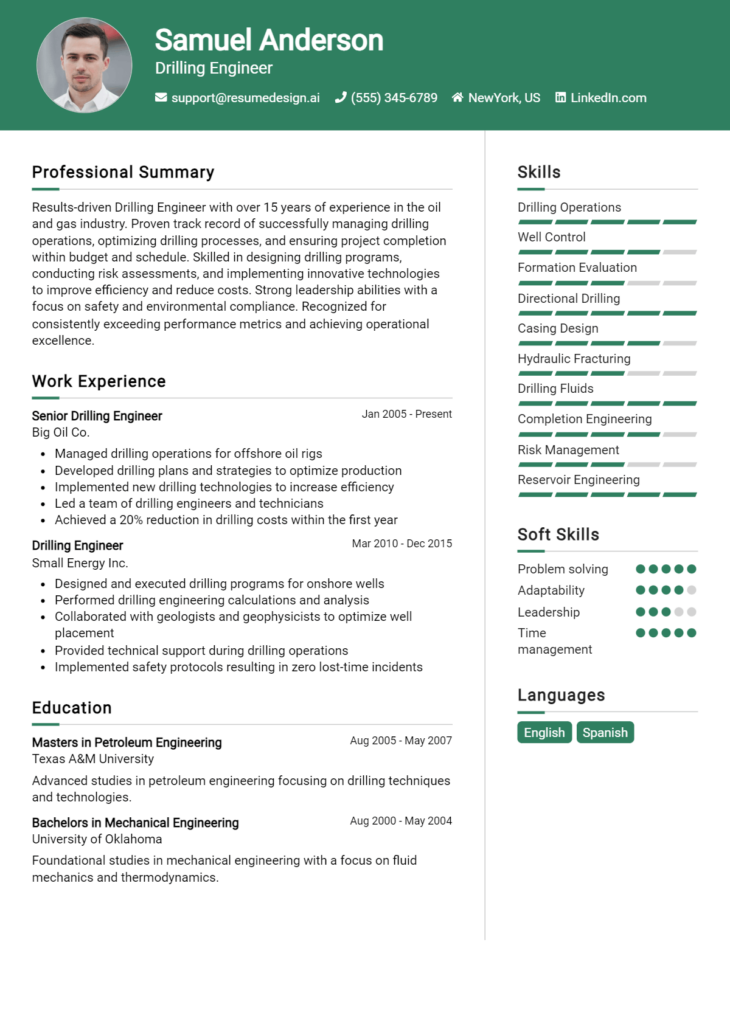Subsea Engineer Core Responsibilities
A Subsea Engineer plays a pivotal role in the oil and gas industry, focusing on the design, installation, and maintenance of underwater systems. They require a strong foundation in engineering principles, coupled with operational and problem-solving skills to tackle complex challenges. This role often bridges various departments, ensuring seamless collaboration between engineering, operations, and project management. A well-crafted resume can effectively highlight these technical competencies and showcase how they align with the organization’s objectives.
Common Responsibilities Listed on Subsea Engineer Resume
- Design and develop subsea systems and equipment.
- Conduct feasibility studies and risk assessments.
- Coordinate with multidisciplinary teams for project execution.
- Perform subsea installations and inspections.
- Analyze data and troubleshoot subsea operations.
- Manage project timelines and budgets.
- Ensure compliance with safety and environmental regulations.
- Prepare technical reports and documentation.
- Participate in field operations and offshore activities.
- Provide technical support during project phases.
- Stay updated with industry trends and technologies.
- Collaborate with clients to understand their requirements.
High-Level Resume Tips for Subsea Engineer Professionals
In the competitive field of subsea engineering, a well-crafted resume can be the crucial factor that sets you apart from other candidates. It serves as your first impression to potential employers, showcasing not only your technical skills but also your professional achievements and unique contributions to previous projects. A strong resume should effectively reflect your expertise in subsea technologies, project management, and problem-solving capabilities. This guide will provide practical and actionable resume tips specifically tailored for subsea engineer professionals, helping you present the best version of your career to prospective employers.
Top Resume Tips for Subsea Engineer Professionals
- Tailor your resume to the job description by including keywords and phrases that match the specific requirements outlined by the employer.
- Highlight relevant experience, particularly roles that involved subsea operations, design, or project management, to demonstrate your suitability for the position.
- Quantify your achievements where possible, such as the percentage of cost savings achieved on a project or the number of successful installations completed.
- Showcase industry-specific skills such as deepwater drilling, ROV operations, and subsea pipeline design to emphasize your technical expertise.
- Include certifications and training that are relevant to subsea engineering, such as IMCA certification or specialized courses in subsea technology.
- Use action verbs to describe your responsibilities and achievements, making your contributions clear and impactful.
- Keep your resume concise and focused, ideally one to two pages, ensuring that every word adds value to your narrative.
- Incorporate any collaborative projects or teamwork experiences, as subsea engineering often requires strong interpersonal skills and collaboration with multidisciplinary teams.
- Consider adding a summary statement at the top of your resume that encapsulates your key qualifications and career goals in subsea engineering.
By implementing these tips, you can significantly increase your chances of landing a job in the subsea engineering field. A polished and targeted resume not only showcases your technical abilities but also demonstrates your professionalism and preparedness for the challenges of this dynamic industry. With the right presentation of your skills and achievements, you can make a lasting impression on potential employers, paving the way for exciting career opportunities.
Why Resume Headlines & Titles are Important for Subsea Engineer
In the competitive field of subsea engineering, crafting a compelling resume is essential for capturing the attention of hiring managers. A well-thought-out resume headline or title serves as the first impression of a candidate's qualifications, providing a succinct summary of their expertise and unique value proposition. A strong headline can instantly draw in recruiters, highlighting the candidate's relevant skills and experiences in one impactful phrase. This initial hook should be concise, relevant, and tailored to the specific job being applied for, ensuring that it resonates with the expectations of potential employers.
Best Practices for Crafting Resume Headlines for Subsea Engineer
- Keep it concise: Aim for a headline that is no longer than 10 words.
- Be role-specific: Clearly indicate that you are a subsea engineer.
- Highlight key skills: Incorporate critical technical skills relevant to subsea engineering.
- Use action-oriented language: Begin with active verbs that convey expertise.
- Include years of experience: If applicable, mention your years of experience in the field.
- Showcase achievements: Reference notable accomplishments or projects you've worked on.
- Tailor for the job: Adapt your headline for each position you apply to, reflecting the job description.
- Avoid jargon: Use clear and straightforward language that is easily understood.
Example Resume Headlines for Subsea Engineer
Strong Resume Headlines
Experienced Subsea Engineer Specializing in Deepwater Projects
Innovative Subsea Engineer with 10+ Years in ROV Operations
Results-Driven Subsea Engineer Focused on Pipeline Integrity Solutions
Weak Resume Headlines
Engineer Seeking Job
Subsea Specialist
Strong headlines are effective because they convey specific expertise and achievements while immediately communicating the candidate's value to potential employers. They are designed to catch the eye and provide a clear indication of the candidate's professional focus. In contrast, weak headlines fall flat because they are vague and non-specific, failing to distinguish the applicant in a competitive job market. Without a strong, relevant headline, candidates risk being overlooked in favor of those who present their strengths more effectively.
Writing an Exceptional Subsea Engineer Resume Summary
A resume summary is a crucial element for a Subsea Engineer, serving as the first impression a hiring manager will have of a candidate's qualifications. A well-crafted summary quickly captures attention by succinctly showcasing key skills, relevant experience, and notable accomplishments that align with the job role. It provides a snapshot of the candidate's professional identity, setting the tone for the rest of the resume. For a Subsea Engineer, where technical expertise and project success are paramount, an impactful summary is essential to stand out in a competitive job market. It should be concise, compelling, and tailored specifically to the job being applied for, highlighting the most pertinent qualifications that will resonate with potential employers.
Best Practices for Writing a Subsea Engineer Resume Summary
- Quantify achievements with specific metrics to demonstrate impact.
- Highlight relevant technical skills and competencies that match the job description.
- Customize the summary for each job application to reflect the specific requirements.
- Use industry-specific terminology to convey expertise and familiarity.
- Keep it brief, ideally within 3-5 sentences, focusing on essential information.
- Showcase unique accomplishments or projects that distinguish you from other candidates.
- Avoid generic phrases and instead use strong action verbs to convey your contributions.
- Make sure to include any certifications or licenses relevant to subsea engineering.
Example Subsea Engineer Resume Summaries
Strong Resume Summaries
Dynamic Subsea Engineer with over 8 years of experience in deepwater oil and gas projects, successfully leading teams to complete projects 15% under budget while adhering to strict safety regulations. Proven track record in designing and implementing innovative subsea systems, enhancing operational efficiency by 25%.
Detail-oriented Subsea Engineer specialized in ROV operations and underwater inspections, contributing to a 30% reduction in downtime across multiple projects. Adept at utilizing advanced modeling software to optimize design and performance of subsea installations.
Results-driven Subsea Engineer with expertise in pipeline installation and maintenance, successfully managing projects worth over $10M. Recognized for developing best practices that improved project timelines by 20% and enhanced team collaboration.
Weak Resume Summaries
Subsea Engineer with some experience in the field looking for a new opportunity. I have worked on various projects and have a good understanding of subsea systems.
Experienced engineer seeking a position in subsea engineering. I have skills in project management and teamwork, and I am eager to contribute to a new company.
The examples of strong resume summaries effectively highlight specific achievements and relevant skills, making a clear connection to the role of a Subsea Engineer. They provide quantifiable results and demonstrate a direct impact on past projects, which can significantly impress hiring managers. In contrast, the weak summaries are vague and lack detail, failing to showcase any measurable outcomes or relevant expertise. This makes them less appealing and memorable to potential employers.
Work Experience Section for Subsea Engineer Resume
The work experience section of a Subsea Engineer resume is critical as it serves as a platform to showcase the candidate's technical skills, project management abilities, and success in delivering high-quality subsea solutions. This section not only highlights the specific engineering competencies required for subsea projects but also emphasizes the candidate’s capability to lead teams effectively and meet industry standards. By quantifying achievements and aligning past experiences with the demands of the subsea industry, candidates can significantly enhance their appeal to potential employers.
Best Practices for Subsea Engineer Work Experience
- Clearly outline technical skills relevant to subsea engineering, such as ROV operations, pipeline installation, and subsea system design.
- Quantify achievements wherever possible, using metrics like cost savings, efficiency improvements, or project completion times.
- Use action verbs to describe responsibilities and accomplishments, showcasing leadership and initiative.
- Highlight collaborative projects that demonstrate teamwork and cross-functional communication.
- Focus on outcomes and results to illustrate the impact of your contributions.
- Align experiences with industry standards and best practices to show familiarity with current methodologies.
- Tailor your work experience to the job description, emphasizing the most relevant experiences.
- Include certifications or specialized training that enhance your qualifications in the subsea engineering field.
Example Work Experiences for Subsea Engineer
Strong Experiences
- Led a team of 10 engineers in the successful design and installation of a subsea pipeline, resulting in a 15% reduction in overall project costs.
- Managed the deployment of ROV systems for a major offshore inspection project, achieving a 20% improvement in inspection efficiency.
- Collaborated with cross-functional teams to develop a new subsea technology that increased data transmission rates by 30%.
- Oversaw the execution of a subsea project that delivered on-time and under budget, contributing to a 25% increase in client satisfaction ratings.
Weak Experiences
- Worked on various subsea projects without specifying roles or contributions.
- Assisted in the engineering department but lacked measurable outcomes or specific achievements.
- Involved in team meetings and discussions about subsea engineering topics.
- Helped with documentation related to subsea systems without detailing the impact of that work.
The examples listed reflect the distinction between strong and weak experiences in a Subsea Engineer resume. Strong experiences are characterized by specific achievements, quantifiable results, and clear demonstrations of leadership and collaboration. In contrast, weak experiences lack detail and measurable outcomes, making them less compelling to potential employers. Highlighting successful projects and quantifiable contributions can significantly enhance a candidate's marketability in the competitive field of subsea engineering.
Education and Certifications Section for Subsea Engineer Resume
The education and certifications section of a Subsea Engineer resume is critical as it showcases the candidate's academic background and professional qualifications that align with the demands of the subsea engineering field. This section not only highlights relevant degrees but also emphasizes industry-recognized certifications and the candidate's commitment to continuous learning. By providing detailed information about relevant coursework, specialized training, and certifications, candidates can significantly enhance their credibility and demonstrate their preparedness for the challenges of the role, making them more attractive to potential employers.
Best Practices for Subsea Engineer Education and Certifications
- Highlight degrees in relevant fields such as marine engineering, ocean engineering, or petroleum engineering.
- Include specific certifications such as Subsea Engineering Certification or ROV Pilot Technician Certification.
- List relevant coursework that directly pertains to subsea systems, fluid dynamics, and structural analysis.
- Emphasize advanced or specialized training related to subsea technologies and equipment.
- Detail any hands-on training or field experience in subsea environments.
- Keep the section concise but informative, avoiding unnecessary details about unrelated qualifications.
- Update the section regularly to reflect new certifications or courses completed.
- Use clear formatting to improve readability and highlight important credentials.
Example Education and Certifications for Subsea Engineer
Strong Examples
- B.Sc. in Marine Engineering, University of Southampton, 2019
- Subsea Engineering Certification, Society for Underwater Technology, 2021
- ROV Pilot Technician Certification, International Marine Contractors Association, 2020
- Completed coursework in Subsea Systems Design and Offshore Safety Management.
Weak Examples
- B.A. in English Literature, University of California, 2015
- Certification in Basic Computer Skills, Online Learning Platform, 2019
- General Science Coursework, Community College (completed in 2012)
- Outdated certification in Oil and Gas Industry Fundamentals, 2010
The examples provided are considered strong because they are directly relevant to the subsea engineering field, showcasing specialized education and certifications that align with industry requirements. In contrast, the weak examples reflect qualifications that are either irrelevant to the role of a Subsea Engineer or outdated, failing to demonstrate the candidate's fit for the position. Strong qualifications enhance a candidate's profile, while weak ones can diminish their appeal to employers.
Top Skills & Keywords for Subsea Engineer Resume
In the highly specialized field of subsea engineering, showcasing the right skills on your resume is crucial for standing out among candidates. Subsea engineers are responsible for designing, developing, and maintaining equipment and systems that operate beneath the ocean's surface, making a diverse skill set essential. Highlighting both hard and soft skills is vital, as these attributes not only demonstrate your technical expertise but also your ability to collaborate effectively within multidisciplinary teams. A well-crafted resume that emphasizes your skills can significantly enhance your chances of landing an interview in this competitive field. For more information on how to effectively present your skills and work experience, consider the following key competencies.
Top Hard & Soft Skills for Subsea Engineer
Soft Skills
- Problem-solving
- Team collaboration
- Communication skills
- Adaptability
- Attention to detail
- Time management
- Critical thinking
- Leadership abilities
- Project management
- Conflict resolution
Hard Skills
- Proficiency in subsea engineering software (e.g., AutoCAD, SolidWorks)
- Knowledge of underwater robotics and ROV operations
- Experience with subsea pipeline design and installation
- Familiarity with marine construction techniques
- Understanding of fluid dynamics and hydrodynamics
- Proficient in structural analysis and materials science
- Knowledge of environmental regulations and safety standards
- Experience with risk assessment and mitigation strategies
- Familiarity with subsea inspection and maintenance techniques
- Strong analytical and mathematical skills
Stand Out with a Winning Subsea Engineer Cover Letter
Dear [Hiring Manager's Name],
I am writing to express my interest in the Subsea Engineer position at [Company Name] as advertised on [where you found the job listing]. With a solid foundation in subsea engineering principles, honed through both academic training and hands-on experience in offshore projects, I am excited about the opportunity to contribute to your esteemed team. My background includes extensive involvement in the design, installation, and maintenance of subsea systems, which I believe aligns perfectly with the innovative work being undertaken at [Company Name].
During my previous role at [Previous Company Name], I successfully led a team in the development of subsea production systems, overseeing the project from conception to implementation. This experience not only deepened my technical knowledge in areas such as pipeline integrity, risk assessment, and subsea equipment design, but also enhanced my project management skills, allowing me to coordinate effectively with multidisciplinary teams. My commitment to safety and adherence to industry standards has consistently resulted in successful project completions on time and within budget.
Moreover, I am passionate about leveraging new technologies to improve subsea operations. I have actively participated in research initiatives aimed at enhancing the efficiency of subsea systems, including implementing advanced monitoring solutions and optimizing maintenance strategies through predictive analytics. I am eager to bring this innovative mindset to [Company Name] and collaborate with your talented team to push the boundaries of subsea engineering.
Thank you for considering my application. I am looking forward to the opportunity to discuss how my expertise and vision can contribute to the continued success and growth of [Company Name]. Please feel free to contact me at your convenience to arrange a discussion.
Sincerely,
[Your Name]
[Your Phone Number]
[Your Email Address]
Common Mistakes to Avoid in a Subsea Engineer Resume
When crafting a resume for a Subsea Engineer position, it's crucial to highlight relevant skills and experiences while avoiding common pitfalls that could undermine your candidacy. A well-structured resume can make a significant difference in grabbing the attention of hiring managers. However, many candidates inadvertently include errors that can detract from their qualifications. Here are some common mistakes to avoid:
Generic Objective Statement: Using a vague or generic objective can fail to capture the specific needs of the subsea engineering role. Tailor your objective to reflect your unique skills and aspirations in the subsea domain.
Overloading with Technical Jargon: While technical skills are vital, using excessive jargon can alienate HR personnel who may not be familiar with specific terms. Balance technical language with clear explanations of your accomplishments.
Ignoring Relevant Projects: Failing to mention key projects related to subsea engineering can leave a gap in your experience. Highlight specific projects that demonstrate your expertise in subsea systems, design, and installation.
Neglecting Soft Skills: Focusing solely on technical abilities can overlook vital soft skills such as teamwork, communication, and problem-solving. Incorporate examples that showcase how you effectively work within a team and communicate complex ideas.
Inconsistent Formatting: A resume that lacks consistent formatting can appear unprofessional. Ensure that font sizes, bullet points, and headings are uniform throughout your document for clarity and visual appeal.
Excessive Length: Providing too much information can overwhelm readers. Aim for a concise resume, ideally one page, that highlights your most relevant experiences and achievements in subsea engineering.
Omitting Certifications: Subsea engineering often requires specific certifications and training. Failing to list these credentials can be a significant oversight. Ensure that any relevant certifications, such as ROV training or subsea welding qualifications, are prominently displayed.
Not Tailoring for Each Application: Sending out a one-size-fits-all resume can diminish your chances of making a strong impression. Customize your resume for each application to align your skills and experiences with the specific requirements of the job description.
Conclusion
As a Subsea Engineer, you play a critical role in the design, installation, and maintenance of underwater structures and systems. The responsibilities you undertake include assessing the feasibility of subsea projects, collaborating with multidisciplinary teams, and ensuring compliance with safety and environmental regulations. Your expertise in advanced technology and engineering principles is essential for successful project execution and innovation in this field.
In summary, the key points covered in this article highlight the importance of technical skills, problem-solving abilities, and teamwork in the role of a Subsea Engineer. As the industry continues to evolve, staying updated with the latest advancements and maintaining a strong professional network is crucial for career growth.
To ensure that you stand out in this competitive job market, it's time to review your Subsea Engineer resume. Make use of the various resources available to craft a compelling resume that showcases your skills and experiences effectively. Consider using resume templates for a polished look, try out the resume builder for an easy and guided creation process, explore resume examples for inspiration, and don’t forget to complement your application with a strong cover letter template. Take action today and enhance your chances of landing your dream job in subsea engineering!

